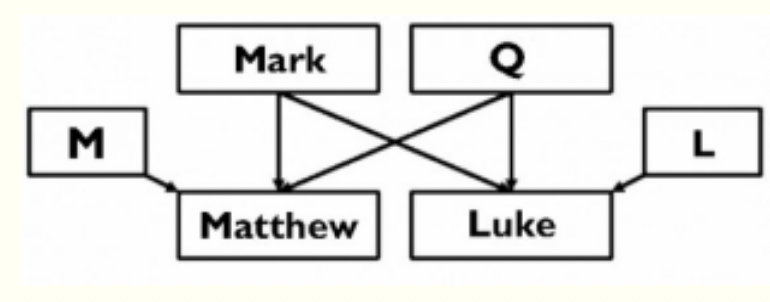Introduction to the Gospels Lecture
What is a “Gospel”?
- Godspell - story about a God
- Euangelion - good news
- Four Stages - 1) preaching of Jesus, 2) preaching of early Christian leaders on death and resurrection of Christ, 3) combined 1 & 2, and 4) Matthew, Mark, Luke, John
- Anonymous - text does not identify who wrote them
- Compilation - many writers wrote with sources all compiled in one
- Jewish - all writers were Jews and had Jewish perspectives
- Ancient Biographies - Greco-Roman types of biographies were often slanted and very biased; sometimes things are made up or change chronologies
- Narrative - told as a story and meant to be entertaining
- Evangelistic - wanted to convince the reader to believe in Jesus
Inspiration
- Dictation Theory - word for word what God dictated the writers to write
- Inerrancy - the Bible is without error in the original text (which we don’t have any of)
- Dynamic Theory - mix of divine and human effort; shows human bias with God’s intention coming through too
- Trustworthy - trustworthiness does not equal perfect
Sources of Truth
- Oral Tradition - scripture being passed down generation by generation orally
- Scripture - Septuagint
- “Word of God” in New Testament
- Not the Bible as we have it today
- Jesus
- Oral Tradition
- Preaching
Stages of the Gospel
- Life setting of Jesus - what Jesus said and did
- Period of Oral Tradition and Early Written Sources - compiling these to help create the Gospel’s
- Evangelists Interpret - Their own opinion added to the Gospel’s
Four Witnesses
- Matthew - Depicted as a man
- Mark - Depicted as a lion
- Luke - Depicted as an ox
- John - Depicted as an eagle
- Synoptic Gospels - Matthew, Mark, Luke; “seem to hold together”
- Chronology - Mark was first, then probably a decade later Matthew and Luke, THEN John
- Why not just one gospel? - Four witnesses, no one of them is perfect
- Marcion - wanted only Luke as the Gospel
- Synoptic puzzle - why are the details of the Gospel’s different
Two-Source Hypothesis
Q - Sayings of Jesus; Material found in Matthew and Luke but not in Mark
M - Matthew’s other sources
L - Luke’s other sources

Criticism
- Source Criticism - discern the sources a writer used
- Textual Criticism - find the closest to what could be what the author meant
- Literacy Criticism - study the text’s form and style
- Historical Criticism - reconstruct what happened in the world at that time to understand the people and agendas at that time